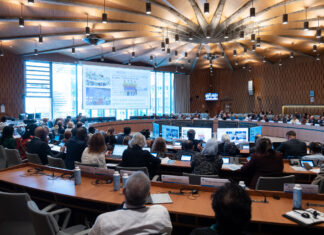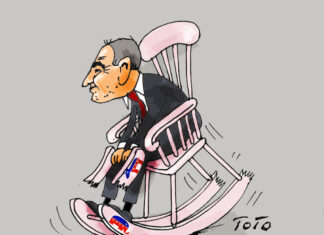The following keynote address was delivered by Mirror-Spectator editor Alin K. Gregorian at the annual Genocide commemoration in Providence, on April 28.
As most know, we commemorate the date April 24, 1915, because it was the day when the Ottoman government rounded up approximately 250 cultural and political leaders of the Armenian community. Of course, the Genocide had begun much earlier, in the 1880s, and continued until 1922.
After killing 1.5 million Armenians, the Ottoman government and later the Republic of Turkey embarked upon a concerted effort to erase all physical traces of Armenian presence from their historic homeland of Western Armenia. Churches have been destroyed, khachkar stone cross monuments have been pulverized or dismantled and used as bricks in new buildings, erasing these people all over again. We see the once-majestic churches in Ani, the medieval Armenian capital during the Bagraduni kingdom, now just so much rubble.
This attitude, both of rabid anti-Armenianness and destruction of monuments, has been inherited by the Azerbaijani government.
This year, as we mark the 109th anniversary of the Genocide, our worldwide Armenian community has been rocked by yet another ethnic cleansing, this time by Azerbaijan. One major difference between the events of a century ago and now is the smaller death toll in this most recent tragedy. However, as we saw with the events dating back to 2020’s 44-day war, waged by Azerbaijan, the threats didn’t stop until the very last Armenian citizen of Artsakh (or Nagorno Karabakh, as it is officially known) left in 2023. In one short week, September 23 through October 1, 2023, about 120,000 ethnic Armenian citizens of Artsakh poured out into Armenia.
Had those people stayed, their fates would have been similar to those of Armenians a century ago.








